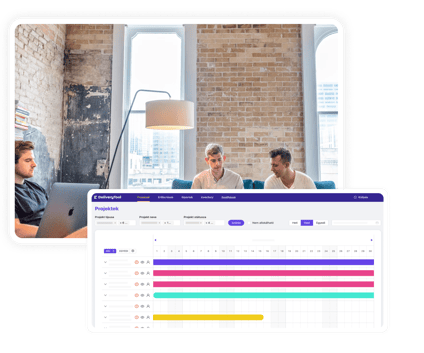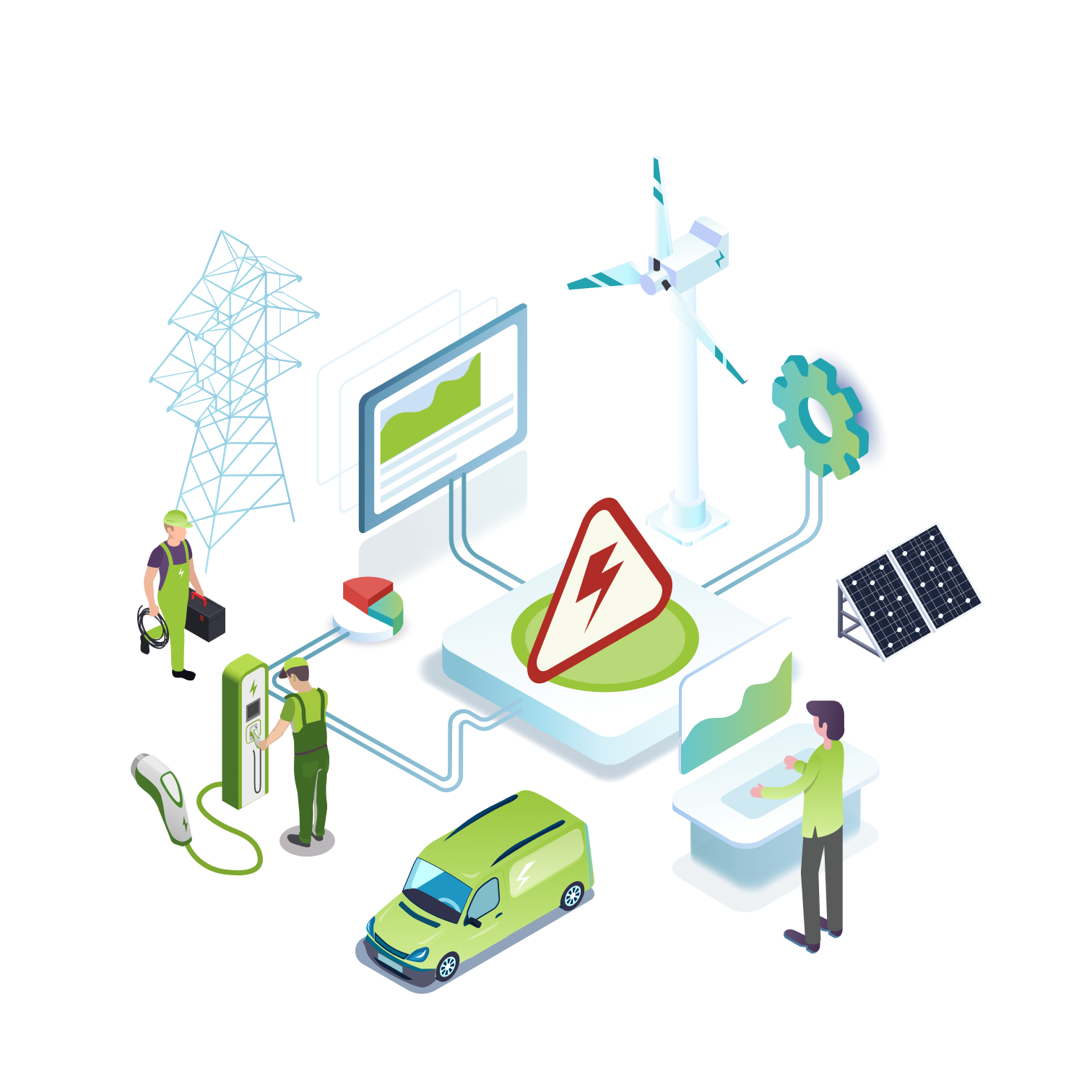Importance of resource management software for businesses

- SOFTWARE DEVELOPMENT
- RESOURCE MANAGEMENT
For many businesses maintaining the administration and allocation of resources tend to feel time-consuming; however, this stage of project management provides the basis for success. Carefully prepared resource management helps businesses create a sustainable and profitable environment for workers and the organization. Resources are essential to reach your organizational goals, and resource management is an efficient tool for reaching them. The ultimate goal of resource management is to find and create the best combination of resources that satisfy needs deriving from in-house or outside of the company, but also to be aware that the occupied resource might be needed in a higher priority task. The success of an initiative completion relies on balancing resources during peak and low-demand times also.
Resources are essential to reach your organizational goals, and resource management is an efficient tool for reaching them. The ultimate goal of resource management is to find and create the best combination of resources that satisfy needs deriving from in-house or outside of the company, but also to be aware that the occupied resource might be needed in a higher priority task. The success of an initiative completion relies on balancing resources during peak and low-demand times also.
|
|
|
|
Resource management is all about transparency to deliver projects at the highest quality. It enables project teams to minimize both idle and overutilization during execution, providing an alive place for workers. Viewing your projects from a bird's eye prevents miscommunications within the team, enabling higher control over planning and execution. Assessing resource capacity on time increases the feeling of safety within the team and with the partners while simultaneously reducing the risk of burnout of adequate resources.
|
|
|
|
Resource management software helps companies to face daily challenges such as project overload, scope creep, and failures due to time constraints. RM software provides a comprehensive view of available resources and their skills, capabilities that help team leaders to set appropriate expectations with key stakeholders. It is always a common challenge for project managers to manage resource capacity based on the demand and give all resources tasks at any time or allocate them to higher priority projects when needed. Overcoming these obstacles is crucial to reaching the organization's strategic goals and building more satisfying relationships with clients and partners.
|
|
|
|
Present your projects, resources, milestones and reports in an easy-to-use, straightforward interface where all functions are allocable and can be reviewed, edited and filtered in a standard timeline. Add new projects, enter your details, group your records, and add timeframes and resources - whether you allocate human or physical resources to your processes, the interface's alert function will warn you even if you have over-scheduled your capacity in each interval. With simple planning options, DeliveryTool provides portfolio-level visibility of projects, current status (from contract to delivery), available capacities, and deployable resources across the entire resource pool.
Features of DeliveryTool
Optimize your resources
Manage all your planning, resource allocation and management tasks based on competencies and capacities in a single interface. Use your resources more efficiently and adapt quickly to unexpected events.
Portfolio visibility of projects
DeliveryTool shows the progress of projects in a transparent way, so the user can easily and quickly find out the resource capacities and statuses of the tasks to be performed.
 Resource capacity utilization
Resource capacity utilization
The platform provides a real-time indication of the evolution of the resource inventory during project implementation so that the project manager can be immediately informed of any issues affecting the human or physical resources of the workflow.
Run on-premises or in cloud
Grape's system allows you to run DeliveryTool in your private environment or the cloud.
Share this post on social media:
Posts by Tag
- IoT (17)
- Smart cities (16)
- E-mobility (14)
- Energy Management (10)
- Mobility (9)
- Software development (9)
- Marketing automation (6)
- RPA (6)
- Robotic Process Automation (6)
- electric vehicles (6)
- Internet of Things (5)
- IoT solution (5)
- Marketing software (5)
- Smart Building (5)
- Business Intelligence (4)
- Custom applications (4)
- IoT platform (4)
- Uipath (4)
- electric charging (4)
- IoT devices (3)
- Properties (3)
- AI (2)
- BI (2)
- Montu (2)
- Multi-device functionality (2)
- Omnichannel (2)
- RPA Budapest (2)
- Smart city (2)
- UX design (2)
- app development (2)
- artificial intelligence (2)
- crm (2)
- crm software (2)
- electric charging station (2)
- machine learning (2)
- marketing campaign (2)
- optima (2)
- API Testing (1)
- Agriculture (1)
- Automated Testing (1)
- BYOD (1)
- EV (1)
- Energy Communities (1)
- Event insights (1)
- Event report (1)
- Green IoT (1)
- HR (1)
- IT Outsourcing (1)
- ML (1)
- Power BI (1)
- Resource Management (1)
- Smart Home (1)
- Smart Office (1)
- TaaS (1)
- UX/UI Design (1)
- Xamarin (1)
- cloud (1)
- cloud computing (1)
- cross-selling (1)
- data driven marketing (1)
- digital twin (1)
- dynamic customer segmentation (1)
- esg (1)
- inbound marketing (1)
- industry 4.0 (1)
- onprem (1)
- onpremise (1)
- scalability (1)
- software robot (1)
- testing as a service (1)
- upselling (1)
Recent Posts
Read On

- IOT
- INTERNET OF THINGS
- ENERGY MANAGEMENT
- SMART CITIES
What is an energy management software, and how can you benefit from it?
Energy prices are rising daily as the demand for energy for residential, commercial or business use increases. According to Enerdata, a 4% increase in European electricity consumption has occurred since 2020. To reduce operational costs and facilitate energy-efficient consumption, IoT-based energy...

- IOT
- INTERNET OF THINGS
- IOT SOLUTION
- SMART CITIES
IoT features for solar energy systems
The electric usage of households is expanding rapidly as most home appliances are electricity-demanding. To meet these surging needs, there's an increased need to switch to sustainable resources, such as solar energy. In order to manage these complex systems, IoT systems are crucial.

- MOBILITY
- E-MOBILITY
- SMART CITIES
E-Mobility opportunities and challenges in the Energy & Utility sector
A large share of electric vehicles on Europe's roads in the future will have implications for the electricity generation and distribution infrastructure, which means energy and utility companies are forced to provide more resources. What's more, Europe's vehicle-emission regulations are forcing car...





